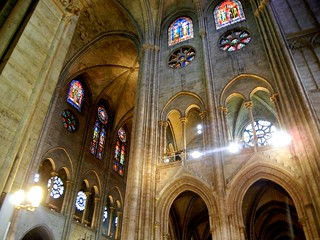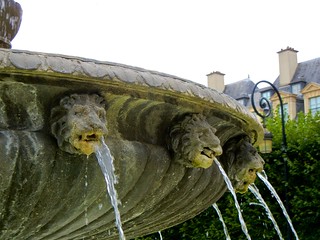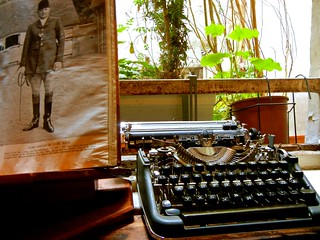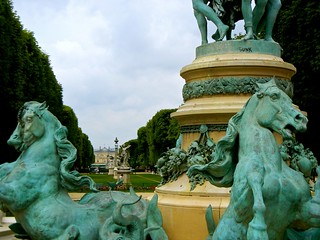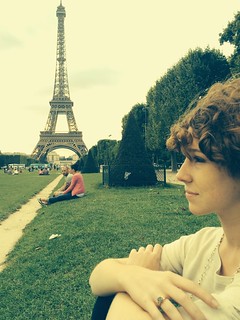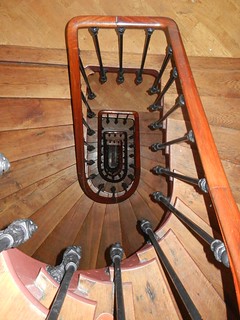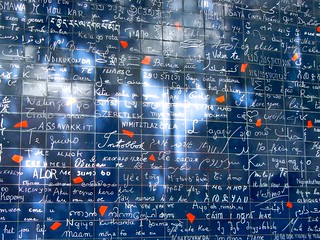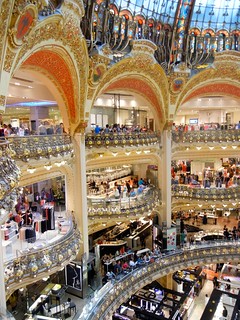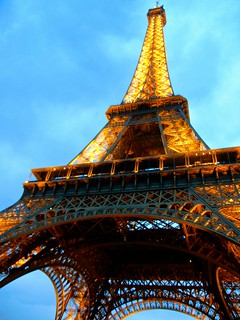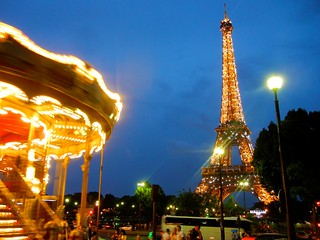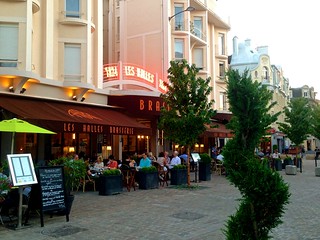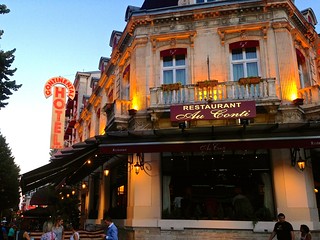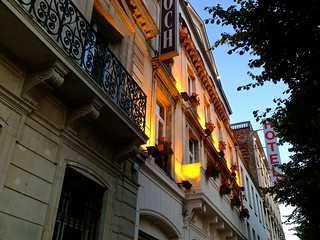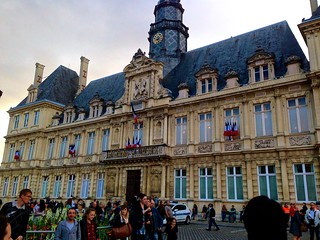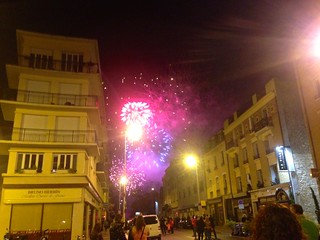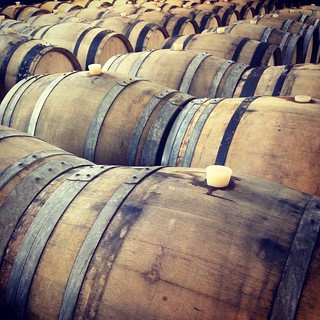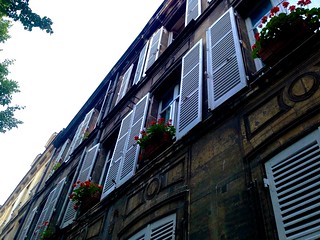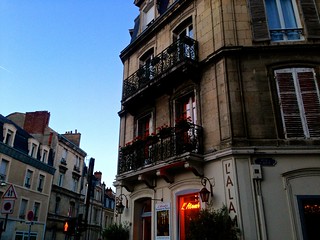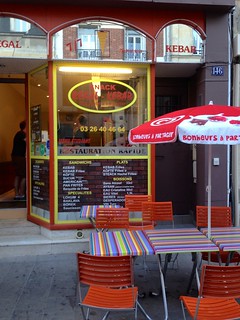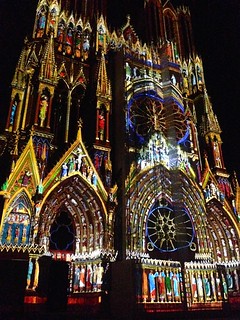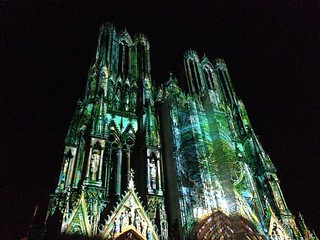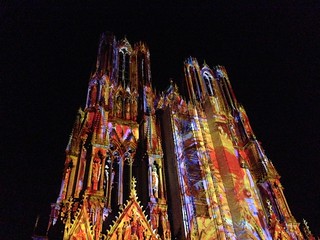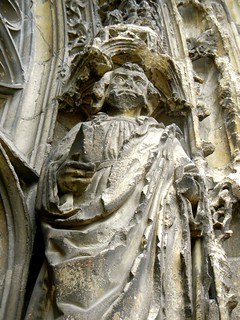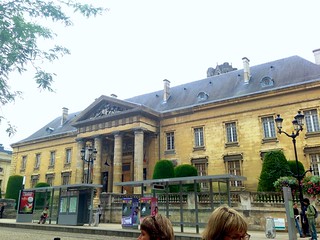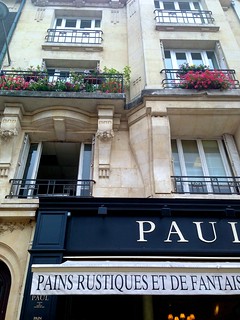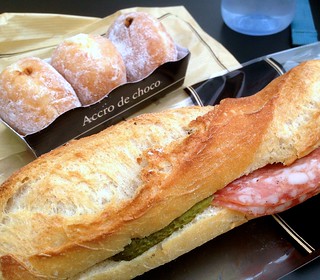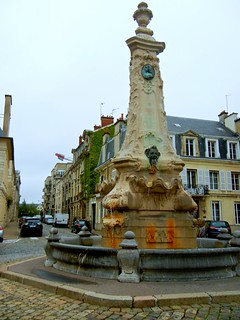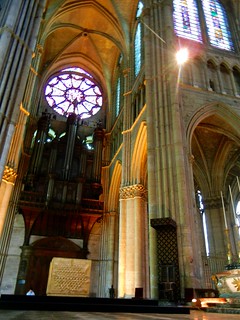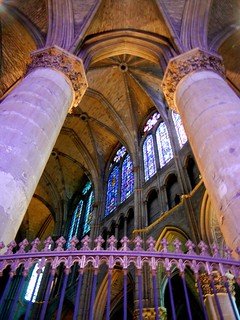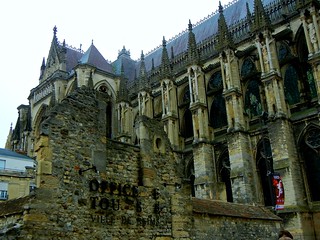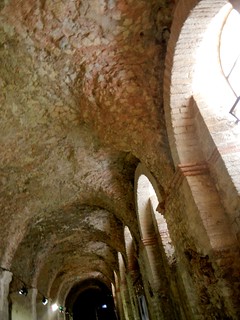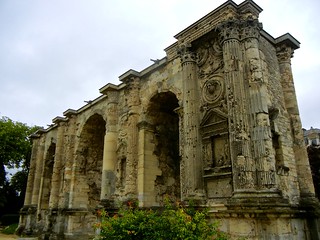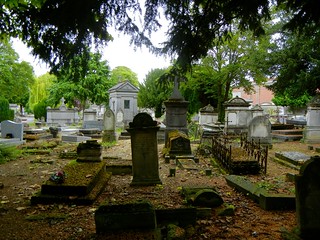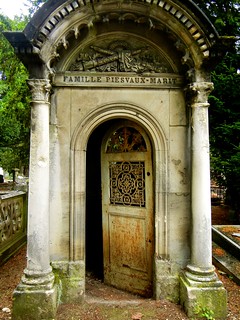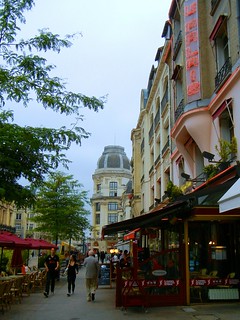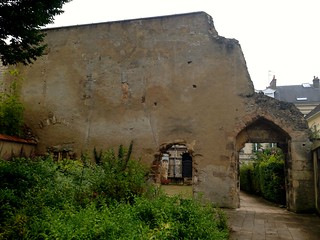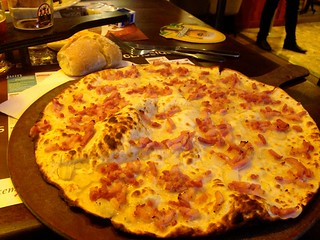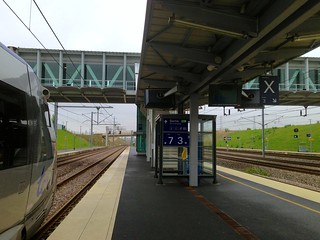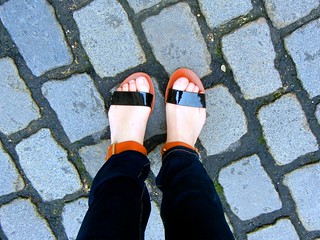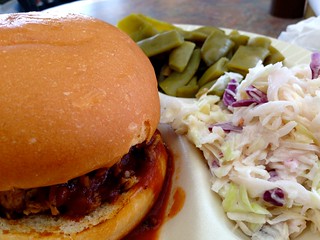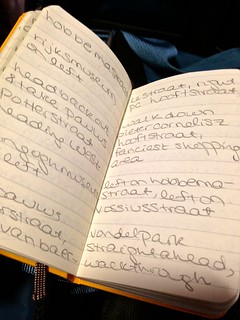If it weren’t obvious by the time I’d gotten back to the States, I’ve clearly been MIA for these past four (going on five) weeks. Life caught up to me, including moving into a new house (alongside my devoted, hard-working, and interior-savvy mother) and starting my third year of grad school.
Still, I couldn’t leave it at that — I needed closure.
Our last few days in St. Albans were spent entirely in St. Albans, which was a blessing — it was just low-key enough to be able to take a deep breath after almost a month straight of traveling, and yet busy enough to still be filled with new and exciting discoveries. Our evenings, now free after Evensong, became something of a Tour de Albans Cuisine, beginning with a group outing to The Waffle House at Kingsbury Mill.
No, I’m not talking about ye olde Waffle House / Huddle House / Kitchen House / whatever knock-off yellow-block-lettered-sign restaurant you’re thinking of…although I wouldn’t say no to an order of bacon cheese grits and chocolate chip waffle from my dear American Waffle House.
 Its British equivalent was simply a flour mill from the 1500s that, although still in use, had largely been converted into a restaurant specializing in sweet and savory waffles. The outdoor patio sat over the water rushing from the churning mills, and a quick tour of the inside showed working parts of the mill behind glass and molding beams of wood.
Its British equivalent was simply a flour mill from the 1500s that, although still in use, had largely been converted into a restaurant specializing in sweet and savory waffles. The outdoor patio sat over the water rushing from the churning mills, and a quick tour of the inside showed working parts of the mill behind glass and molding beams of wood.
If you’re having a hard time envisioning what savory waffles might entail, you’re in dire need of a traditional Dutch pancake, because even the thought of one of those things can make my mouth water.
But as for savory English pancakes, picture this: A large, soft, doughy waffle topped with pulled pork barbecue, homemade cole slaw, and some spices for decoration, drizzled with an optional (pure — we ain’t talking Aunt Jemima) maple syrup.
By the time we left the mill, the sun was beginning to set, casting a beautiful pink glow on Verulamium Park as we headed back toward the abbey and our hotel…but not before making a two-hour pit stop at Ye Olde Fighting Cocks, the oldest pub in Britain ca. 793. We were joined by close to a dozen others from the choir, and we spread out in this ancient building with its creaking floors, low-beamed ceilings, and marbled glass windows.
The next day, Ryan and I walked to the Hypocaust Roman mosaic, the remains of a second-century Roman mansion that dwelt largely untampered with until the 700s, when monks stole the bricks of this building to construct…yes, none other than the abbey itself. Miraculously, the large mosaic (I would guestimate 300 square feet) remains quite beautiful, even after almost 2,000 years. A hypocaust was discovered in this same mansion, which is a Roman system of underfloor heating (hypo meaning “under”, caust meaning “burnt”). As unbelievable as this still seems to me, some Roman dude moved to the middle of this little island off the coast of Europe and set up a central heating system in 100 A.D. Carolina still struggles with central heating in our ca. 1800 dorms. This oxymoron baffles me.
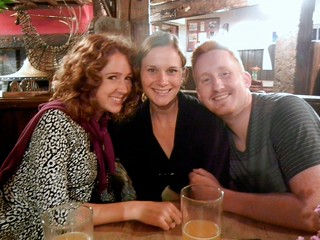 From there, we trekked northward to the Roman Theatre — yes, the same Roman Theatre I’d originally set out to find the day I got so hopelessly lost. Thankfully, we made it during open hours, and were able to stroll around its perimeter to read various plaques explaining the purposes of each area. A winery here, forgery there, smithy there, barley keep here, stadium where gladiators might have fought over there. Before it was burned to the ground in around 200 A.D., it must have been a center of commerce and entertainment…not unlike Times Square, Roman Edition.
From there, we trekked northward to the Roman Theatre — yes, the same Roman Theatre I’d originally set out to find the day I got so hopelessly lost. Thankfully, we made it during open hours, and were able to stroll around its perimeter to read various plaques explaining the purposes of each area. A winery here, forgery there, smithy there, barley keep here, stadium where gladiators might have fought over there. Before it was burned to the ground in around 200 A.D., it must have been a center of commerce and entertainment…not unlike Times Square, Roman Edition.
Yes, I did just equate Broadway to a gladiator stadium.
After that evening’s Evensong, we enjoyed our first English Thai food on a lovely back patio that was removed from the surrounding streets (and, truthfully, might once have been a backyard). We caught up with our group to enjoy an informative tour of the town, from facts and buildings to juicy 13th-century gossip, and concluded the night with drinks while picnicking by Vintry Garden, a vast expanse of beautiful green that separates the abbey from Verulamium Park, Verulamium River, and Ye Olde Fighting Cocks.
Saturday morning was spent exploring the well-known St. Albans Street Market, which was resembled something akin to a flea-market-meets-Raleigh’s-Artsplosure-meets-Dollar-Tree, and I say this with the utmost fondness. A few paces could lead you by a fresh fish stand and dollar-office-supply booth, but also by a stand of hand-stitched leather bags and lovely printed scarves. We wandered up, down, and back up the stalls, pointing and touching and gazing at novelties as we passed.
And lunch — be still, my heart — comprised my favorite British food: pasties.
Oh pasties, how I miss you…or more specifically, West Cornwall Pasty Co. I would trade two pairs of pumps for a chicken and spicy chorizo pasty right now.
That night marked a rather special moment in my life: I enjoyed my first meal at an Indian restaurant that didn’t end in disaster. (For those who don’t know, I’m deathly allergic to a few choice nuts that are great delicacies in China, India, and American hipster culture.) I’ve had two not-too-bad-but-let-me-take-a-Benadryl-just-in-case encounters in Raleigh, but this was my first full meal without need of three Benadryl (or a quarter cup, whichever is most readily available) or an ambulance. Our food was delicious, and particularly special given the skylights overhead that revealed first a beautiful golden sunset, followed by a cozy thunderstorm.
 Of course, thunderstorms are only cozy when you don’t have to leave the comfort of a covered building, so our walk to The Farmer’s Boy — a local (divey) pub — was pretty damn wet. We finished up the night at the White Hart, an old Tudor-style inn next to our hotel that must have once been a house. Upon entering, you weave through room after narrow room, ducking under door frames and rounding odd corners to get to the bar, and then to a seat. Laughing, singing locals took turns playing the piano, and a few suits of armor stood sentry to listen.
Of course, thunderstorms are only cozy when you don’t have to leave the comfort of a covered building, so our walk to The Farmer’s Boy — a local (divey) pub — was pretty damn wet. We finished up the night at the White Hart, an old Tudor-style inn next to our hotel that must have once been a house. Upon entering, you weave through room after narrow room, ducking under door frames and rounding odd corners to get to the bar, and then to a seat. Laughing, singing locals took turns playing the piano, and a few suits of armor stood sentry to listen.
And then dawned our last full day in St. Albans, beginning with Sunday mass (performed by our lovely choir) and then with drinks at the Deanery just down the cobbled path and into what might have appeared to be gardens from the other side of the crumbling brick walls.
We had lunch at The Snug, a pub in the heart of St. Albans, and dedicated our afternoon to feverish packing and frantic answering of e-mails. Our final dinner together could not have been more perfect: All 40-something of us dined at Loch Fyne, a “seafood & grill” restaurant that boasted delicious courses throughout the night (and equally delicious wine, although I shouldn’t give that fact as much weight as I probably do). I’m delighted to announce that the choir was invited back for a possible residency in five years, which is exciting news for Trinity and the many connections it has already made “across the pond”.
And Monday was spent in utter insanity, as should be expected with my luck with public transportation. Regardless, I was home by 5 p.m. Arizona time, and passed out in bed by 5:15. It took more than a week to get over my jet lag, by which point I was beginning a new life in Mesa, Arizona. Weeks later, I still glance through old photos and memories from our time in Europe, and wouldn’t trade those experiences for anything. I’m incredibly lucky to have seen and done so much in so little time, and even more lucky to have met incredible people along the way. Thanks to everyone for reading and taking part in my adventures! Au revoir, afscheid, and cheers!

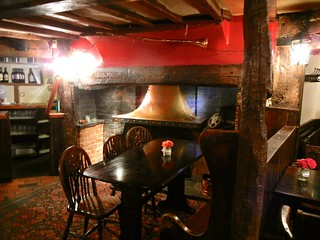

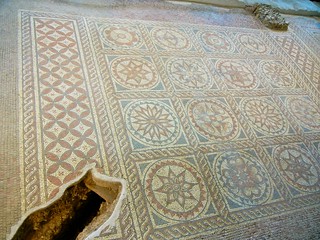
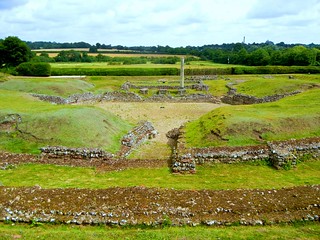

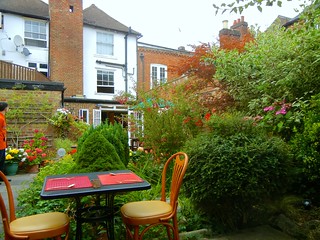
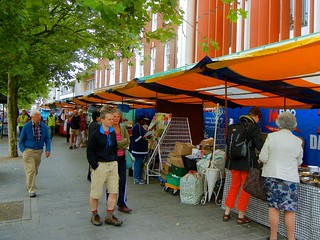
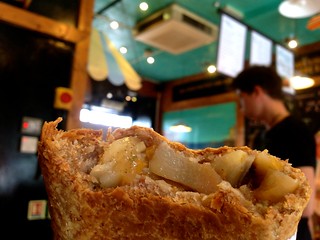

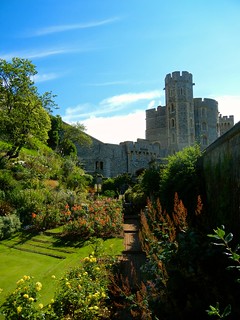
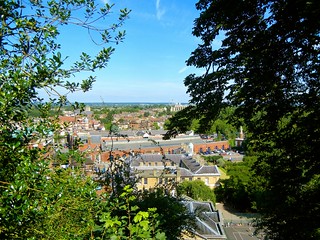

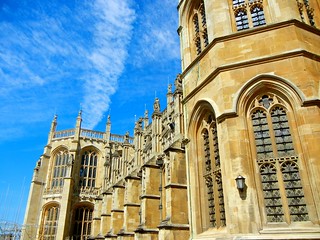

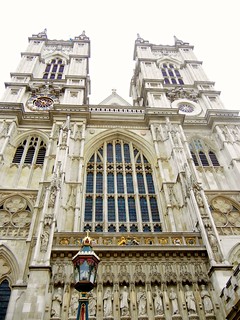









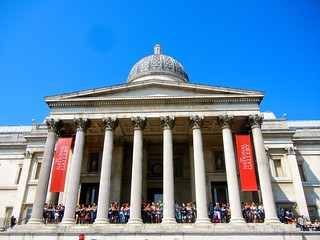

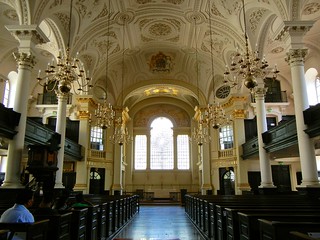
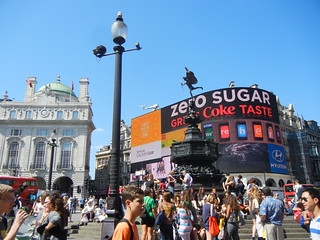
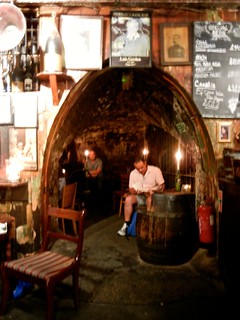
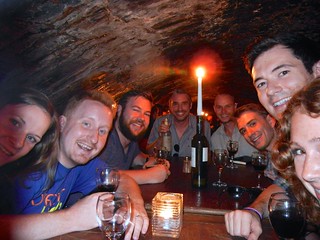

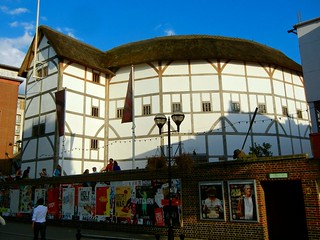
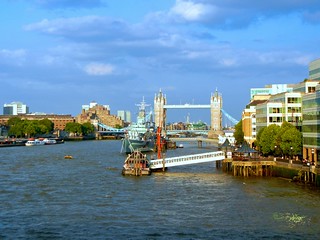
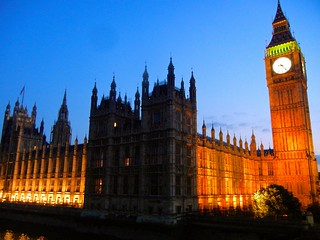


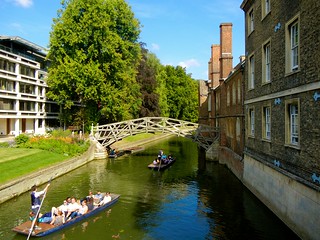
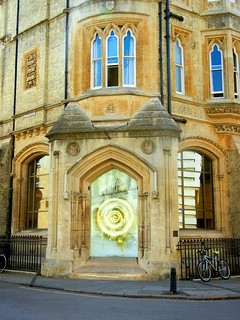


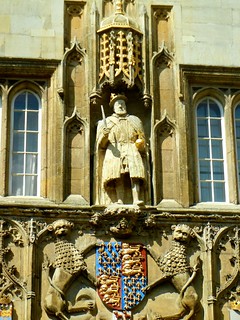
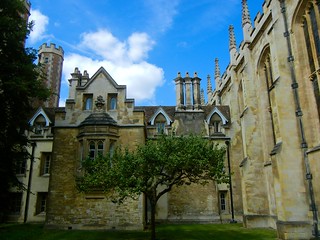
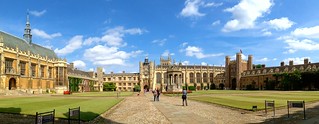
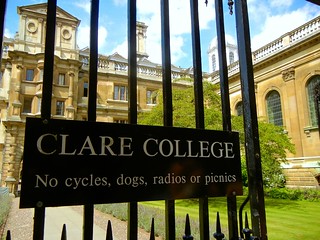
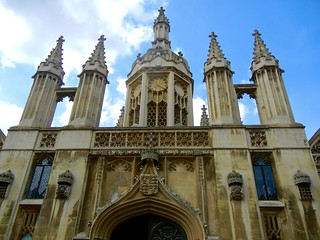

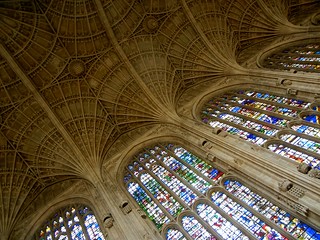

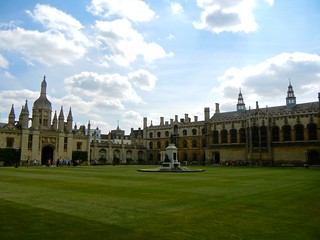
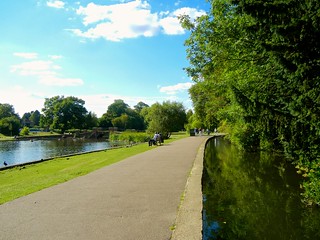
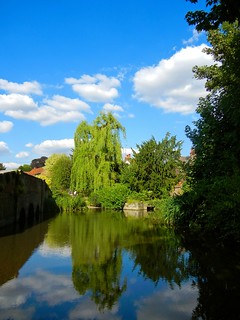


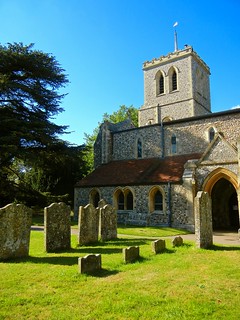



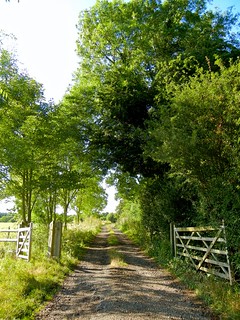
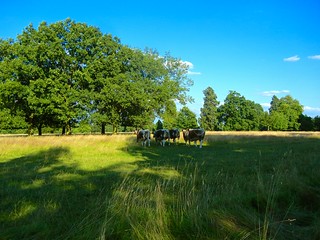

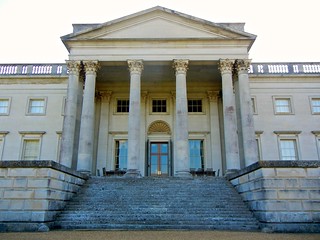

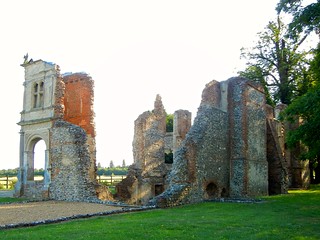
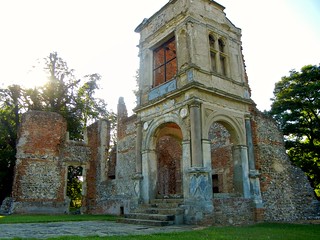
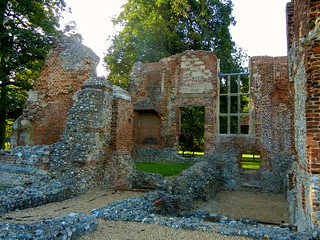 Thanks to the compass app that Apple won’t let you delete, I was able to find my way back to St. Albans. When I reached the top of a hill, I could see far in the distance the towers of the abbey and a series of cottages comprising the town’s centre.
Thanks to the compass app that Apple won’t let you delete, I was able to find my way back to St. Albans. When I reached the top of a hill, I could see far in the distance the towers of the abbey and a series of cottages comprising the town’s centre.



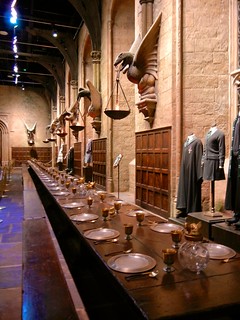

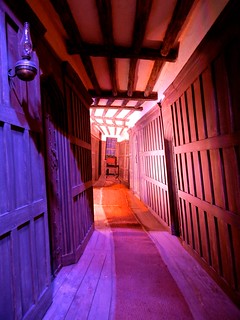
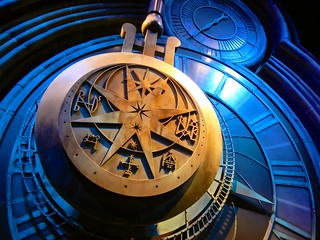
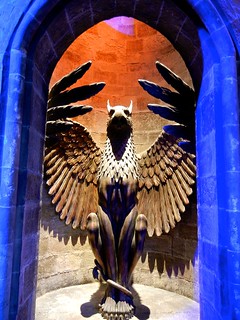

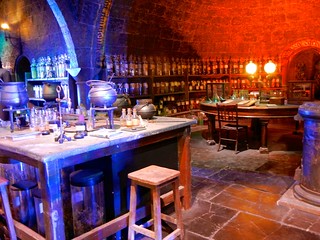
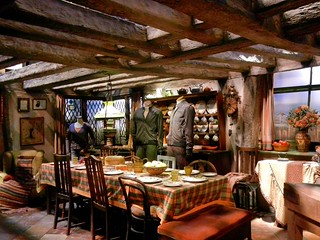
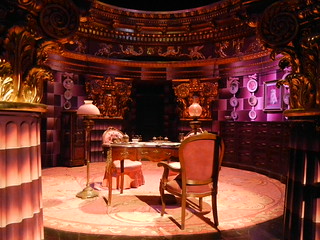
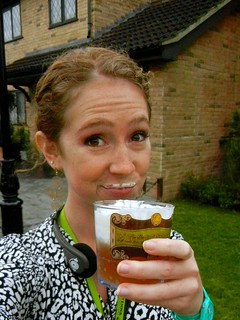

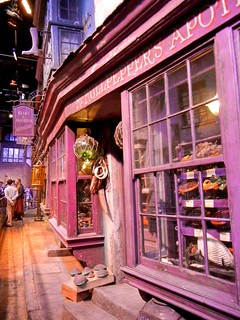



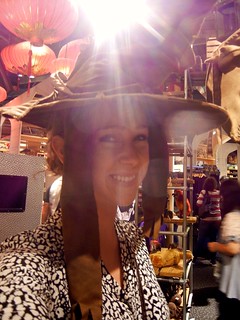
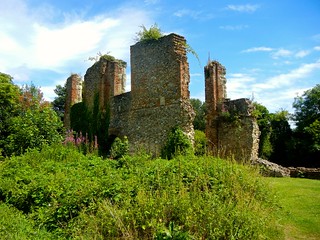

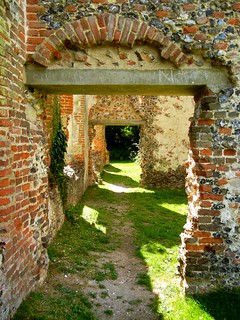
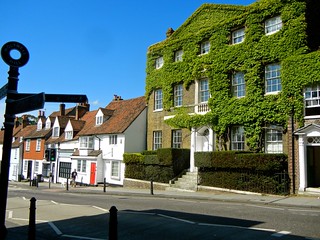
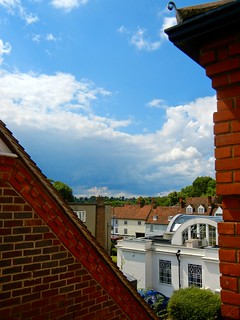

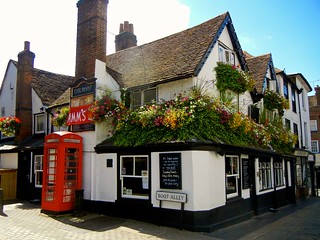

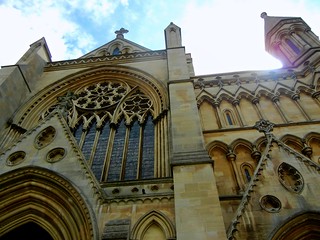
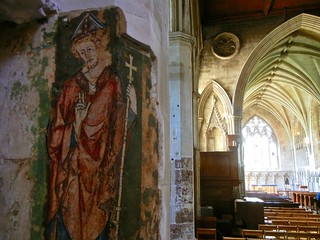

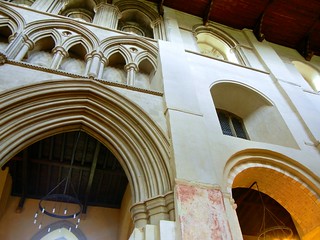
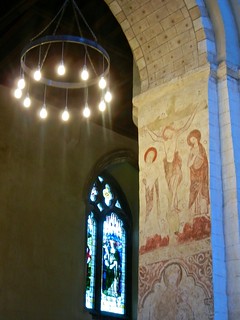


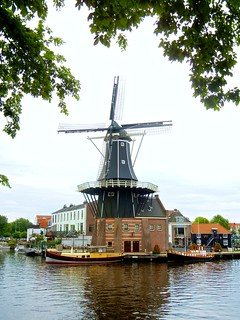

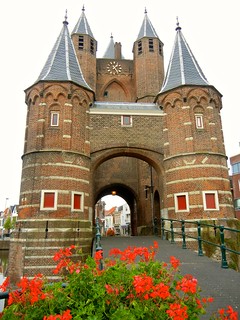
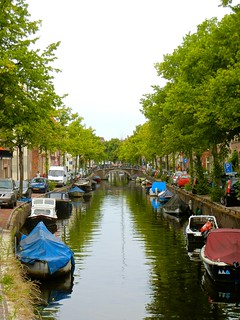
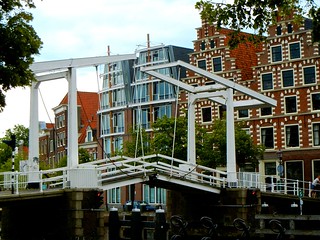

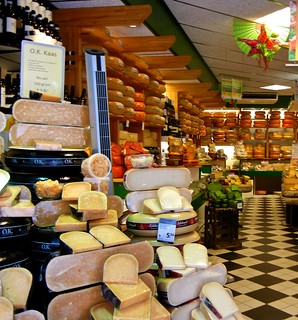
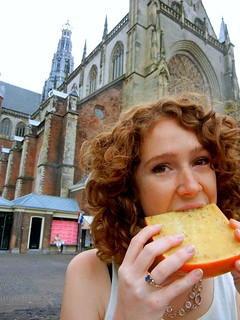
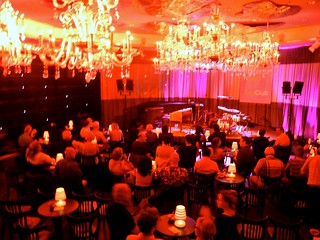
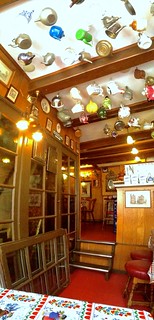



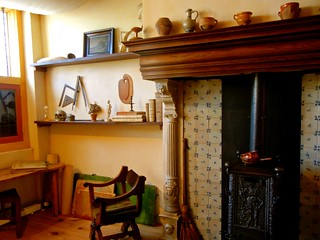
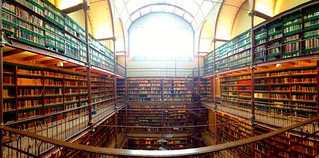
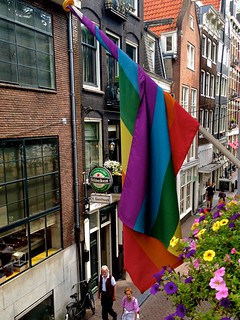


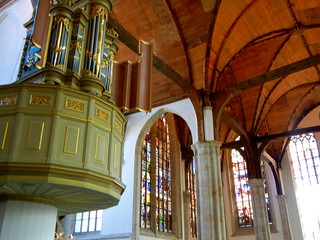
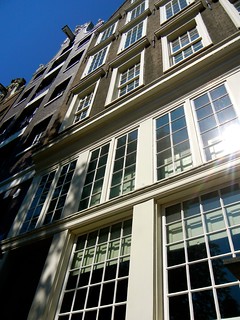

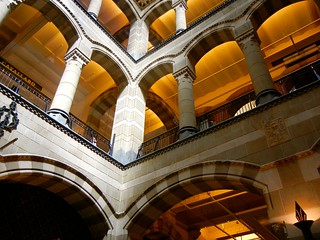

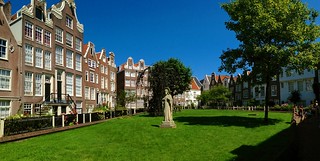
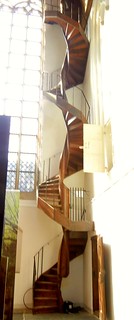 That evening, thoroughly museumed-out after making a half-hearted attempt at the renowned Biblical Museum, we wandered and haggled our way through Waterloopleinmarkt (and I scored a cute blouse and harem pants), gave into our sore need for Asian food (in my case, after more than a month without it) at an inexpensive Thai restaurant close by, and finished the night with free Wi-Fi at Café P 96, where we sat out by the canal and people-watched until the sun had set.
That evening, thoroughly museumed-out after making a half-hearted attempt at the renowned Biblical Museum, we wandered and haggled our way through Waterloopleinmarkt (and I scored a cute blouse and harem pants), gave into our sore need for Asian food (in my case, after more than a month without it) at an inexpensive Thai restaurant close by, and finished the night with free Wi-Fi at Café P 96, where we sat out by the canal and people-watched until the sun had set.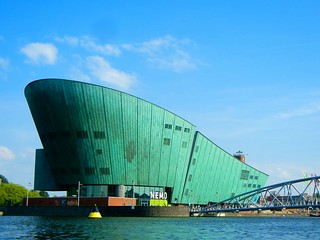


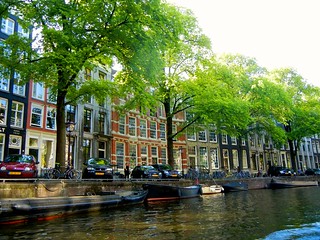
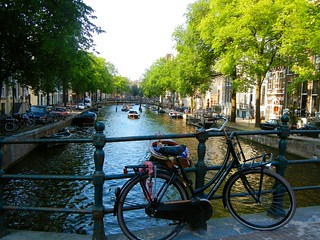




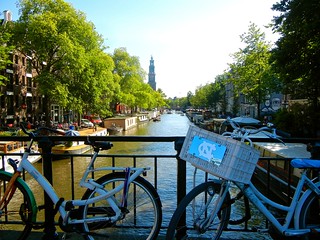
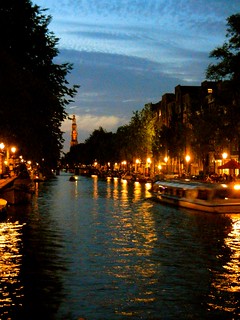


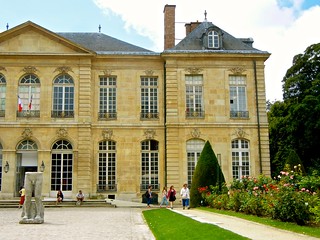




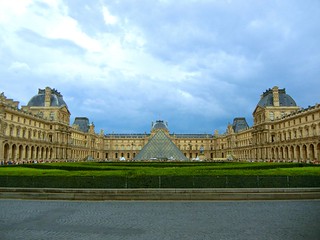
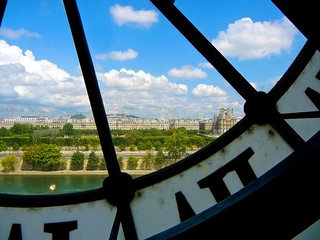
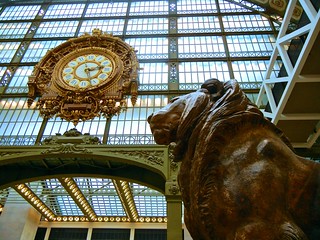
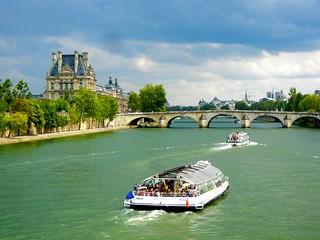

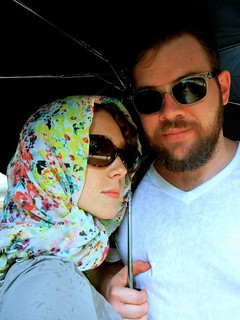
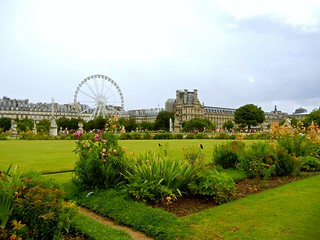

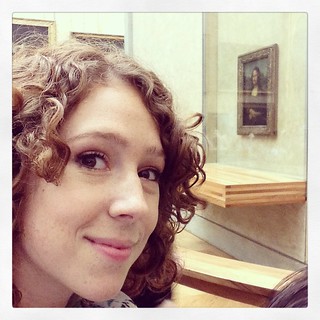
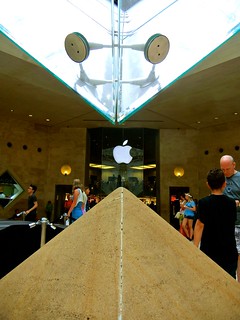 And thus concluded our lovely three days in Paris. In retrospect, as much as we loved this city (and as much as I loved my two weeks in France), we are head over heels in love with Amsterdam.
And thus concluded our lovely three days in Paris. In retrospect, as much as we loved this city (and as much as I loved my two weeks in France), we are head over heels in love with Amsterdam.
